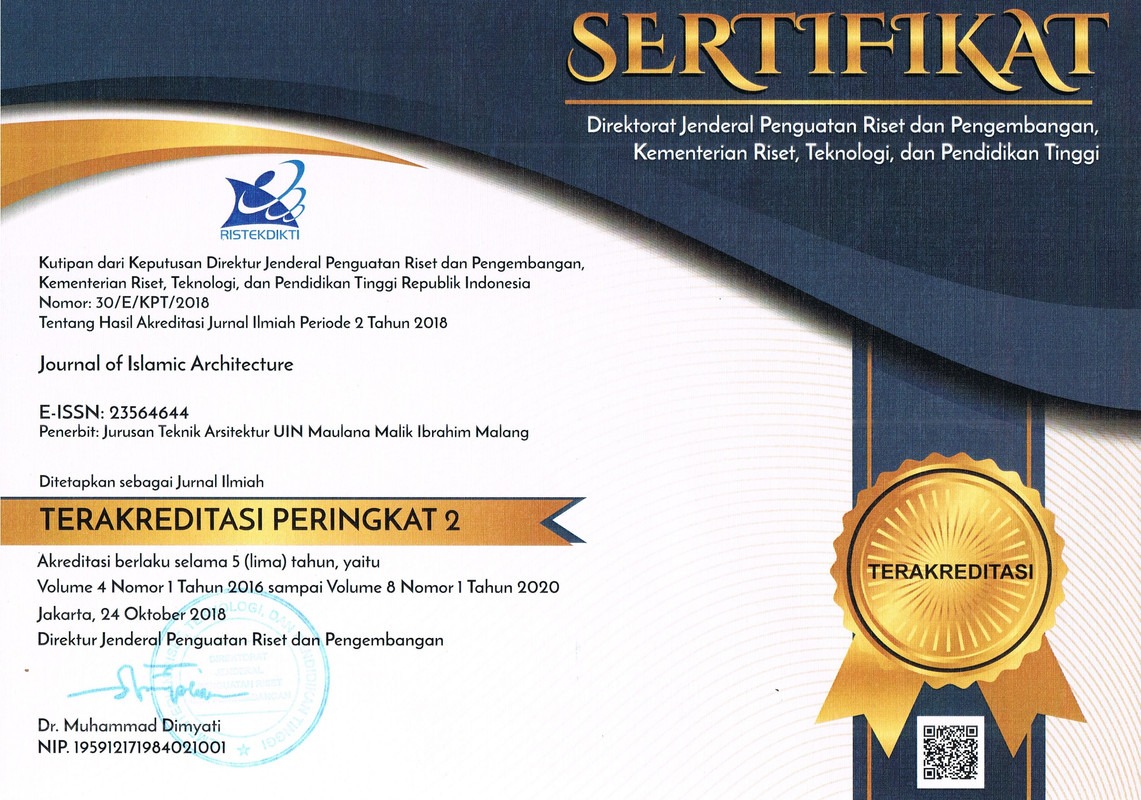SHARJAH’S ISLAMIC URBAN IDENTITY AND THE LIVING CITY
Abstract
Prominently placed amidst open gardens and along the waterfront of the Sharjah Corniche, several recent monumental buildings collectively suggest a new urban image and socio-cultural space for a modern Muslim urban identity. Along with a series of restaurants, entertainment spaces, and office building, Masjid al-Noor, Masjid al-Maghfira, Al-Qasbah, and the Museum of Islamic Civilization house important cultural institutions, combining eclectic references to the history of Islam into a new urban order. Neither entirely the conservative vernacularism of whole-scale historical mimicry, nor altogether the neo-vernacularism of fragmentary pastiche, this urban assemblage embraces these two distinct design approaches at the level of the individual buildings, but unifies them at the urban scale in what could be called neo-regional urbanism. The stylistic clarity of Masjid al-Noor, which consistently integrates the stylistic elements of Ottoman styled mosques, contrasts with the isolated fragments of Moorish/Hispanic lattice work that adorn the otherwise modern Masjid al-Maghfira. Al-Qasbah’s neo-Islamic horse-shoe arches contrast with the Syrian-Ottoman styled facades of the Museum of Islamic Civilization. Although these buildings individually address the problems of built form and the application of Islamic ornaments disparate ways, taken together this group of new monuments forms a complex urban whole that serves to reflect and deepen an emerging sense of identity that is built upon a similarly complex mix of multicultural non-western ethnicities that make up the fluid and mobile population of Sharjah. This urban assemblage has become such a popular space of gathering that it has begun to shift the centre of gravity of Sharjah’s urban social space towards the Corniche, and in so doing has produced an authentic alternative to the introverted malls and isolated dreamscapes of Dubai. This paper studies the strategies and effects of this assemblage of neo-Islamic monuments in Sharjah, and considers how it effectively rethinks the possibilities of the contemporary Arab city.
Keywords: Urban identity, Sharjah, Muslim heritage, Arab culture
Keywords
DOI: https://doi.org/10.18860/jia.v1i4.1781
Refbacks
- There are currently no refbacks.






